Trying to develop a dark sensor. Have successfully made it but with a major problem. As you can see the circuit here:

When the LDR is covered the LED lights up using the relay NO terminal. However the problem is that with slight disturbance of light falling on the LDR the relay triggers on and off very quickly and that makes the LED blink rapidly.
I want to slow down the switching speed. ie, the relay coil only turns off if the LDR is illuminated for atleast a second or so.
Note that I need a high current to run the LED in high brightness. I need around 450-500mA current through it. That is the reason I have used a relay.
